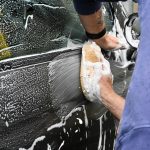Essential Maintenance Tips to Boost Your Car’s Lifespan
The Electrical System
A vehicle’s electrical system is crucial for its operation, which includes the battery, alternator, and wiring. Maintaining these components and being able to troubleshoot issues can prevent costly repairs and ensure the vehicle’s longevity.
Maintaining Electrical Components
The electrical components in a car require regular attention. The battery should be inspected for corrosion on the terminals and checked to ensure it holds a sufficient charge. Clean terminals with a mixture of baking soda and water if needed. Drivers should monitor their headlights and interior lights, as dimming may indicate a weak battery or faulty alternator.
Inspect the drive belt that connects to the alternator for any signs of wear. Replacement is necessary if there is any cracking or fraying. Additionally, checking the fuse box and replacing blown fuses is part of maintaining electrical health. Regularly starting the car and letting it run for a few minutes, even if it’s not in use daily, can help maintain battery health.
Troubleshooting Electrical Issues
Troubleshooting electrical problems in a vehicle involves understanding and identifying common symptoms. When experiencing flickering lights, it’s essential to inspect the alternator output and battery voltage. A multimeter is a useful tool for these tests. If lights dim or flicker while driving, it might suggest an issue with the alternator or connections.
Another frequent issue can be a car that won’t start, which could be due to a dead battery or a faulty starter. Listening for clicking sounds during ignition helps pinpoint whether the starter requires attention. Additionally, checking for any loose or damaged wiring could resolve several electrical issues.
Avoiding Common Mistakes
Maximizing a car’s lifespan involves steering clear of common maintenance errors. Misunderstandings about routine checks can lead to reduced efficiency and potentially costly repairs. Learn the essentials of effective maintenance and avoid falling into typical pitfalls.
Common Misconceptions in Car Maintenance
There is a widespread belief that oil changes are not necessary every so often, leading some to ignore this critical task. Skipping oil changes can result in significant engine wear. Following the manufacturer’s schedule is crucial to ensure engine performance.
Another misconception is that tires only need checking when visibly worn. Tire pressure should be regularly monitored to avoid uneven wear and improve fuel efficiency. Incorrect pressure can shorten tire life and affect driving safety.
Many believe that washing the car is purely aesthetic. Regular cleaning prevents corrosion and damage from road salts and pollutants. Neglecting this can lead to bodywork damage over time.
DIY Car Maintenance Dos and Don’ts
For those considering DIY car maintenance, using the right tools is essential. Investing in high-quality equipment ensures tasks are done safely and efficiently. Improper tools can damage components and pose safety hazards.
It’s tempting to tackle complex repairs without proper knowledge. Unfamiliar repairs should be left to professionals to avoid costly mistakes. Missteps in critical systems, like brakes or the engine, can lead to long-term issues.
Oil and coolant levels are often checked DIY-style, but using the wrong type can cause damage. Always refer to the vehicle’s manual for specifications. Following these guidelines reduces the risk of unnecessary repairs and extends the vehicle’s life.



